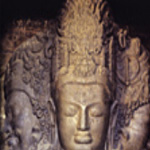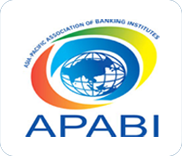Mumbai was previously known as Bombay. It is the most modern city in India. It captures the spirit of the changing pace set by liberalization and modernization. Once was a cluster of seven islands. Mumbai was presented to King Charles II in 1661 as part of the dowry when he married Princess Catherine de Braganza of Portugal.
Over the years, as colonialism gave way to independence, Mumbai has transformed itself into a city with thriving markets, business houses and many different communities reflecting a cosmopolitan atmosphere. On the surface, it represents the ever-changing face of today's India-the old coupled with the dynamic new, and yet at its very core, the heart of the city is steeped in Indian customs and values at Mumbai.
It is the capital of Maharashtra state and its official language is Marathi although English and Hindi are widely spoken and understood.
The fast-paced life has given rise to hordes of "fast-food outlets" on almost every road, offering lip-smacking choices of Mumbai's very own pau bhaji, bhel puri and kababs. There is no dearth, though, of multi-culinary delicacies dished out in posh restaurants by expert chefs. Mumbai is a shopper's delight with bargain buys, exclusive boutiques, ethnic markets and mini bazaars.
This busy city is also the hub of a thriving cultural life, with a constant stream of performances in music, dance and drama. Mumbai is the seat of the Hindi film industry, known locally as Bollywood. It produces the largest number of films in the world.
Today, Mumbai is the commercial capital of India.
Tourist Attractions:

|
Elephanta Caves: 9 nautical miles across the sea from the Gateway of India lay Elephanta, also known as ‘Gharapuri’. Visit this green island for the wonders of the 7th century, the painstakingly hewn rock-cut cave temple, dedicated to Shiva. The Maheshamurti panel in which Shiva is shown as a creator, protector and destroyer, is a sight that should be enjoyed at least once in a lifetime. Regular excursions to Elephanta start every day from the Gateway of India. |
 |
Mumbai’s most striking monument, this too was designed by George Wittet. It has an imposing gateway arch in the Indo-Saracenic style with Gujarati and Islamic elements such as wooden carvings. It was built to commemorate the visit of King George V and Queen Mary to India in 1911. This area is also the departing point for ferries plying to Elephanta Island and other beaches across the port. Behind it is the beautiful old (and new) structure of the Taj Mahal Hotel |
 |
Chhatrapati Shivaji Terminus (Victoria Terminus): This is a magnificent building, and considered to be architecturally one of the finest stations in the world. Built by the British in 1888, it has exquisite ornamentation on its facade along with beautifully executed panels and friezes. It holds the statue of Queen Victoria on its dome |
 |
Siddhivinayak Temple:Located in the Prabha Devi area of Mumbai, this popular temple dedicated to Ganesh was rebuilt on the site of a 200-year old temple. Built of black stone, the idol of Ganesh is two and a half feet in height and two feet in width. An unusual feature of the statue is that the trunk turns to the right, not often found on Ganesh idols. Tuesday is the main day of darshan and puja, but this temple is frequented by hundreds of devotees everyday. |
 |
Haji Ali Shrine: Further along the seashore, at the end of a long pathway surrounded by seawater is the shrine dedicated to Haji Ali, a Muslim saint. Access is only at low tide via the pathway. |
Climate
The Climate of Mumbai is a tropical wet and dry climate. Mumbai's climate can be best described as moderately hot with high level of humidity. Its coastal nature and tropical location ensures temperatures won't fluctuate much throughout the year, the mean average of 27.2 °C and average precipitation of 242.2 cm (95.35 inches). The mean maximum average temperatures in about 32 °C (90 °F) in summer and 30 °C (86 °F) in winter, while the average minimums are 25 °C (77 °F) in summer and 20.5 °C (68.9 °F) in winter. Mumbai experiences four distinct seasons: Winter (December–February); Summer (March–May); Monsoon (June–September); and Post-Monsoon (October–December).

